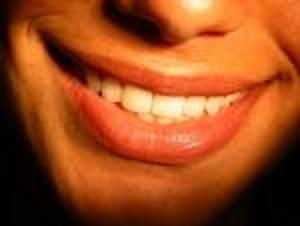Our teeth are one thing that we cannot afford to loose. Without them we aren’t able to eat the way we should and our smile isn’t always worth showing. Some people only see a dentist when they have a toothache but it’s imperative that you have a dental visit twice a year, unless you are told otherwise by your doctor. In addition to dental visits you need to take care of your teeth between check ups. Brushing 3 times a day, as well as flossing is effective in protecting your pearly whites. Although it can be difficult to brush 3 times a day you should always brush at least twice. Preferably once in the morning when you wake, and at night before you go to bed.
If you aren’t practicing good oral hygiene you’re opening the door to dental problems that isn’t easy to close. Periodontal Disease is a bacteria infection that affects the gums and bone that support the teeth. If it is left to itself and not treated, it will lead to tooth loss. Periodontal Disease includes gingivitis and periodontitis.
The mildest form of the disease is gingivitis, which causes the gums to redden, swell, and bleed. In most cases there is either little or no discomfort. Although a person can develop gingivitis, it is reversible with professional treatment and proper oral health care at home, which includes brushing and flossing 3 times a day.
Without treatment, gingivitis can spread and grow below the gum line. There are toxins that are formed by the bacteria in plaque which irritates and affects the gums. This fuels a chronic inflammation reaction and the body turns on itself, and the tissues, plus the bone, which holds up the teeth, is destroyed. Since the gums separate themselves from the teeth, this causes spaces between the teeth and gums and they will become infected. As the disease advances, the pockets deepen and more gum tissue and bone are destroyed. Eventually, teeth can become loose and may have to be removed.
There are many factors of what cause periodontal disease but the main cause is bacteria. Without proper home care your chances of getting it increase. The other factors vary and can affect the health of your gums.
In addition to serious health problems such as cancer and heart disease, smoking also increases the chances of getting periodontal disease. When a patient is diagnosed with the disease, they can be treated but it may not be as effective as someone that is a non-smoker. So smoking should be avoided at all cost.
Although stress doesn’t sound like it would be a risk factor of developing periodontal disease, it is. When a person has stress in their life, it makes it difficult for the body to fight off infections so they are at risk for developing the disease as well as being at risk for hypertension and other health related problems.
For women that are pregnant or who are going through puberty, their bodies are experiencing hormonal changes. These changes affect the tissues in the body, and because the gums get sensitive, at times, can react strongly to the hormonal changes.
Although these are just some of the risk factors, there are several others, so it is important that you take a hands on approach and practice good oral hygiene at home between dental visits.
Once a person is diagnosed with the disease there are treatment options that should be considered and acted upon. Because every person is different, and their disease symptoms may vary, the type of treatments can differ with each of them. There are four surgical treatment procedures that a dentist will suggest to the patient.
Pocket Reduction-A periodontitis (which specializes in periodontal disease) folds back the tissue and removes the bacteria that has developed under the gum line. This procedure will reduce the pockets that have formed between the gum and the bone.
Regenerative Procedures-Like pocket reduction, a periodontitis will fold back the tissue to remove the bacteria and use stimulated proteins that will help the body naturally regenerate bone and tissue.
Crown Lengthening-During a crown lengthening procedure, the periodontitis reshapes the excess tissue and bone which will reveal more of the natural tooth.
Small Tissue Grafts-This can be performed to cover roots or to restore the gum tissue that was absent due to extreme gingival decline.
The reversal of periodontal is possible, but the patient has to be consistent with treatment and exercise patience with the amount of time that it will take for the procedures to be performed. In the end the patient will have a healthy mouth, but should still practice good oral hygiene between dental visits so that they will not have to repeat the procedures. Taking care of your teeth now will prevent dental problems in the future.







